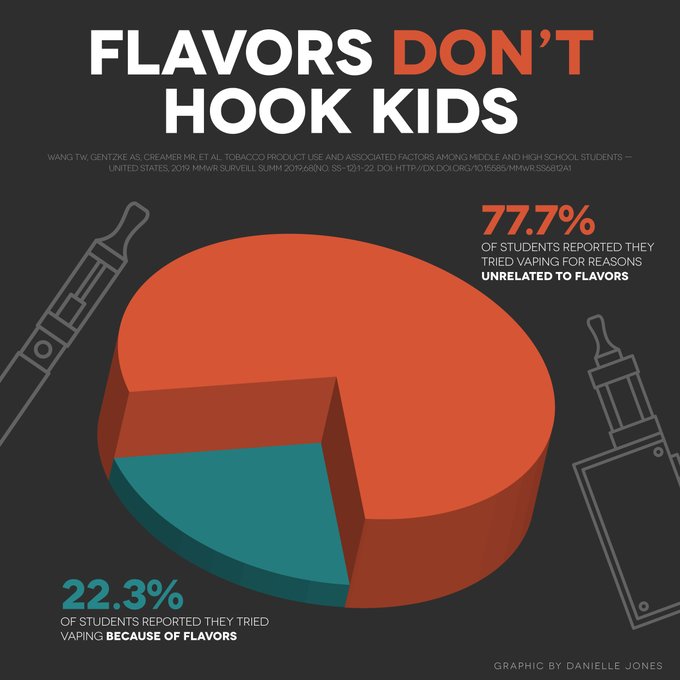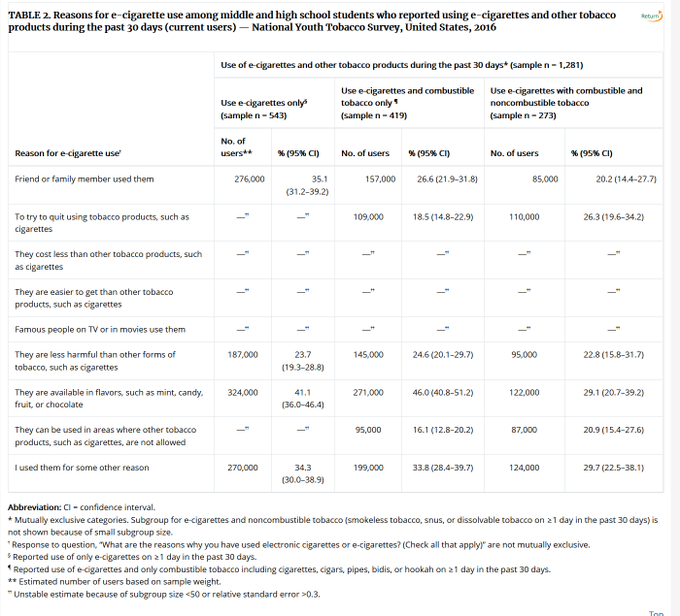Brian King of the CDC Office on Smoking and Health, told the New York Times that high “current use” (meaning any use in the past 30 days, even just one puff) of “all tobacco products” is the fault of vaping. And the Times made that the focus of its story.
“The data released today on youth tobacco product use are deeply troubling and indicate that past progress in reducing youth use of these products has been erased,” said King. “These troubling rates of use are being driven by e-cigarettes, which have no redeeming aspects among youth.”
King, of course, doesn’t recognize what is in fact a huge redeeming aspect: teens who vape are not smoking. Twenty years ago, in 1999, “current use” of cigarettes by high school kids was 34.8 percent—six times higher than in 2019. Past 30-day cigarette smoking by high school students this year was just 5.8 percent—the lowest ever measured. Past 30-day vaping climbed to 27.5 percent, but the vast majority of those kids are engaged in experimentation.The Times didn’t mention that curiosity is the single biggest reason that adolescents experiment with vaping. Neither did UPI, Politico, or the Daily Mail. Press releases from Campaign for Tobacco-Free Kids, the American Cancer Society Cancer Action Network, the American Heart Association, and the American Lung Association also failed to mention the role of curiosity.
The CDC leaders quoted in the agency’s press release had no comment at all on the 28 percent dip in cigarette smoking—the largest one-year decline ever. Likewise, the Times ignored it completely, and UPI relegated it to a small paragraph buried in its story. “There was a small bit of good news from the new 2019 data: Only 5.8 percent of high school kids, and 2.3 percent of middle school students smoke traditional cigarettes,” said the news service.
The NYTS is an annual survey administered jointly by the FDA and CDC to middle- and high school students. Last year, then-FDA commissioner Scott Gottlieb used unpublished preliminary results to claim that we were in the midst of an “epidemic” of youth vaping. Gottlieb brandished the secret numbers like a bludgeon to beat the vaping industry for two months before anyone else got the chance to review them.
“We know that the flavors play an important role in driving the youth appeal,” Gottlieb said in a public statement Sept. 11, 2018. “And in view of the trends underway, we may take steps to curtail the breitling replica marketing and selling of flavored products.” Gottlieb sent letters to JUUL Labs and the major tobacco companies asking them to voluntarily remove flavored products from the market.
The CDC has apparently decided to turn the early and sporadic release of NYTS data into a tradition. This year early survey results (for teen vaping and smoking only) were released on Sept. 11 to back up the Trump administration’s announcement that the FDA would issue guidance to “clear the market” of flavors (except tobacco).
“The Trump Administration is making it clear that we intend to clear the market of flavored e-cigarettes to reverse the deeply concerning epidemic of youth e-cigarette use that is impacting children, families, schools and communities,” said Health and Human Services Secretary Alex Azar. “We will not stand idly by as these products become an on-ramp to combustible cigarettes or nicotine addiction for a generation of youth.”
The outcry from anti-vaping groups when Trump decided to pause the flavor ban may have been so shrill because they knew that the soon-to-be-announced NYTS results wouldn’t prop up their flavors-hook-kids narrative.
It’s possible that Azar didn’t brief the President fully on the reasons teens listed for vaping before persuading him that a flavor ban was needed. It appears from his statements at the time that he was convinced flavors were the primary reason kids decide to try vaping. Most executives would be very unhappy with an adviser who withheld information while trying to influence his policy decision. If that’s true, Sec. Azar may have a lot of explaining to do.
Article Provided By:

Article Written By: Jim McDonald








